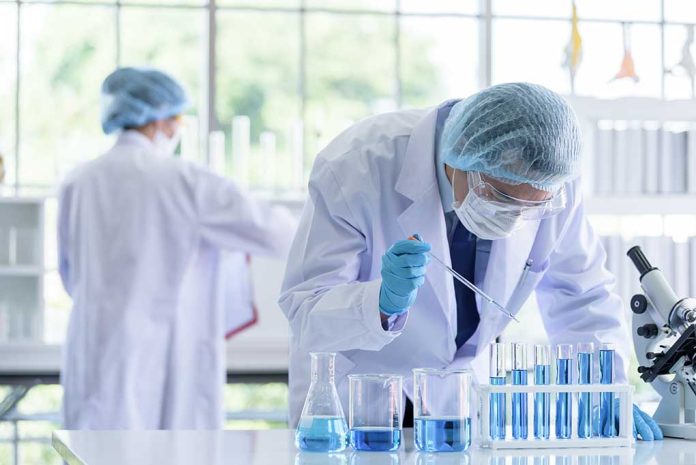
Glass bottles contain up to 50 times more microplastics than plastic bottles, shocking researchers and turning eco-friendly assumptions upside down.
Key Takeaways
- French researchers discovered beverages in glass bottles contain 5-50 times more microplastics than those in plastic bottles or metal cans
- The painted caps on glass bottles were identified as the primary source of contamination, with microplastics matching the color and composition of the cap paint
- Beer showed the highest contamination levels, while wine and water had significantly lower amounts of microplastics even in glass containers
- Simply rinsing bottle caps with water and alcohol can reduce microplastic contamination by up to 60%
- The health implications of microplastic consumption remain uncertain, though researchers are increasingly concerned about potential risks
Glass Packaging Reveals Surprising Contamination Levels
A groundbreaking study by France’s food safety agency (ANSES) has challenged our understanding of food packaging safety by revealing that glass bottles may not be the clean, microplastic-free alternative many consumers believe. The research, published in the Journal of Food Composition and Analysis, found that beverages packaged in glass bottles contained five to 50 times more microplastic particles than identical drinks in plastic bottles or metal cans. This discovery has stunned even the researchers who conducted the study, as they anticipated finding higher contamination levels in plastic containers.
“We were expecting the opposite result when we compared the level of microplastics in different drinks sold in France,” said Iseline Chaïb, one of the researchers involved in the study.
Glass bottles found to have five to 50 times as many microplastics as plastic bottles in shocking new study https://t.co/het6HQMnsF pic.twitter.com/NrbyGivG7h
— New York Post (@nypost) June 22, 2025
Bottle Caps Identified as Contamination Source
The investigation determined that the painted caps on glass bottles are the primary culprit behind the high levels of microplastic contamination. Researchers observed that the microplastic particles found in the beverages matched the color and composition of the paint used on the bottle caps. They noticed tiny scratches on the cap paint, likely caused by friction during handling and transportation, which released microplastic particles into the beverages. Glass bottles averaged around 100 microplastic particles per liter, significantly higher than the levels found in plastic bottles or metal cans.
“We then noticed that in the glass, the particles emerging from the samples were the same shape, color and polymer composition—so therefore the same plastic—as the paint on the outside of the caps that seal the glass bottles,” explained Iseline Chaib, researcher at France’s food safety agency.
Not all beverages were equally affected by microplastic contamination. Beer showed the highest contamination levels, followed by lemonade and soft drinks. Interestingly, wine and water had much lower levels of microplastics, even when packaged in glass bottles. The exact reason for these differences remains unclear, but researchers suggest it may relate to variations in bottle cap composition or beverage processing methods. This inconsistency adds another layer of complexity to understanding microplastic contamination in our food supply.
Health Implications and Simple Solutions
While the health impacts of microplastic consumption remain uncertain, scientists are increasingly concerned about potential risks. Microplastics have been detected globally in air, food, and even human tissues, including the brain. Some research has linked microplastics to inflammation, hormone disruption, and other health issues, though direct evidence of harm to human health is still limited. The ANSES researchers didn’t assess health risks in this study due to the lack of toxicological reference data, but the findings certainly raise questions about what we’re consuming.
“Drinks in glass bottles had five to 50 times more microplastic fragments than in plastic bottles,” reported France’s food safety agency in their findings.
The good news is that researchers identified a simple solution to reduce microplastic exposure from bottled beverages. Cleaning methods such as blowing air and rinsing caps with water and alcohol can reduce microplastic contamination by up to 60%. This straightforward approach offers consumers a practical way to minimize their exposure while manufacturers potentially work on more permanent solutions to the problem. The findings challenge the common assumption that glass is inherently a cleaner packaging option than plastic, illustrating how environmental concerns often involve complex trade-offs.
Rethinking Packaging Choices
This research forces both consumers and manufacturers to reconsider packaging choices. For decades, glass has been promoted as the eco-friendly alternative to plastic, but these findings suggest the reality is more nuanced. While glass remains recyclable and doesn’t break down into microplastics in the environment like plastic does, the immediate exposure to microplastics may actually be higher with certain glass-bottled beverages. The study highlights how well-intentioned environmental choices can sometimes have unexpected consequences, and that solutions to pollution problems are rarely straightforward.
“The reason for this discrepancy remains to be explained,” noted Guillaume Duflos, one of the researchers involved in the study.
As scientists continue to investigate the implications of microplastics in our food and beverages, this study serves as a reminder that assumptions about product safety should be regularly tested through rigorous scientific inquiry. For concerned consumers, the researchers’ recommendation to rinse bottle caps offers an immediate, practical step to reduce microplastic exposure while enjoying glass-bottled beverages. The findings don’t necessarily mean glass packaging should be abandoned, but rather that all packaging types have their own complex profiles of benefits and drawbacks that merit consideration.













